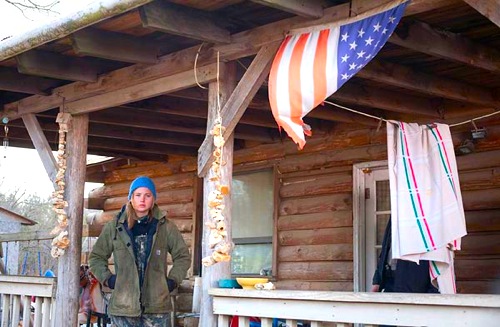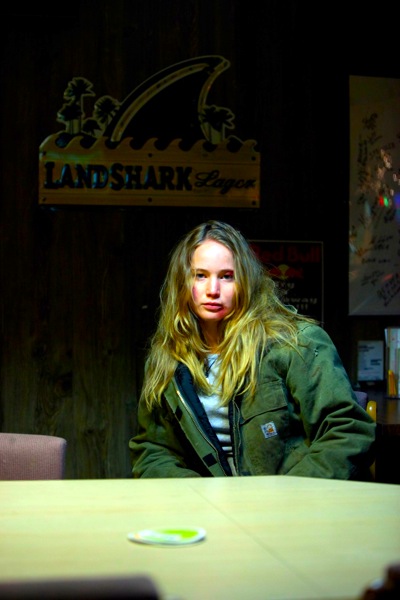
[LFM welcomes a new contributor today, Patricia Ducey, an LA-based screenwriter and film essayist whose work we’ve admired over the years. Her screenplay on Germany’s Baader-Meinhof gang was a finalist in the 2006 Liberty Film Festival screenplay contest. We’re glad to have her on board.]
By Patricia Ducey. Winter’s Bone (written by Debra Granik and Anne Rosellini, directed by Debra Granik; see the trailer here) garnered the Sundance Film Festival’s top award this year and received near universal critical praise, especially for young actress Jennifer Lawrence as the central character of Ree Dolly. Some have called Winter’s Bone a crime story, a western, a quest, or even a ‘country noir’—a definition that Daniel Woodrell, author of the original novel, might quibble with – but noir seems accurate enough. The film has a chilly atmosphere, shot in the relentless gray of winter, in perpetual twilight filtered through bare-limbed trees. We sense there are dark secrets in these hundred-year-old woods that are about to be disturbed.
The film introduces us to teenager Ree Dolly and her web of extended kin who eke out an existence in the Missouri Ozarks with a little ranching and a lot of ‘cookin’ (methamphetamine production). Ree is the sole provider for her two younger siblings and a nearly catatonic mother, since her father Jessup has run out on his bail bond when faced with a long stretch in prison for drug offenses. If Jessup doesn’t show up for his sentencing in one week’s time, the bondsman will take the ranch as collateral – and Ree and the family will be homeless.

A cinematic set-up like this usually prompts an “uh-oh” for anyone hoping for more than another cringe-inducing anthropological foray into the backwoods. Kudos to writer/director Debra Granik, though, for taking pains to avoid the usual stereotypes of flyover country in several key aspects of the story, especially in Ree’s complex character.
Ree may be desperate for money, all right, but she reaches neither for the government teat nor for the family business of ‘cookin’ – the easiest ways to make a quick buck – because she does not see her or her family as victims of society entitled to an easy way out. Instead she sets out to find Jessup, dead or alive, and bring him back to justice. Ree has little but her own sense of honor and family duty to carry her, but that’s enough.
When Ree runs into the wall of silence from the local drug dealers (most of them are Dolly relations), she decides to enlist in the Army instead for the $40,000 bonus. The local Army recruiter, surprisingly, is presented as a sympathetic character: he probes her motives and actually talks her out of enlisting. He counsels Ree that she needs a better reason than the money to enlist, and it may be best to tend to her family for now. Watch closely for an early scene depicting the ROTC and the baby-tending classes at the high school. A PA announcement for college advising plays over the ‘two bad choices’ visual, indicating that the military here is a choice – not a dead end. Continue reading LFM Review: Winter’s Bone – It’s Safe to Go Back to the Art House